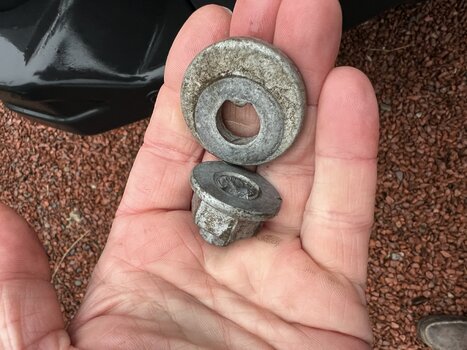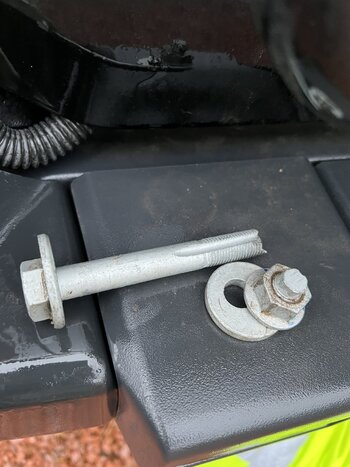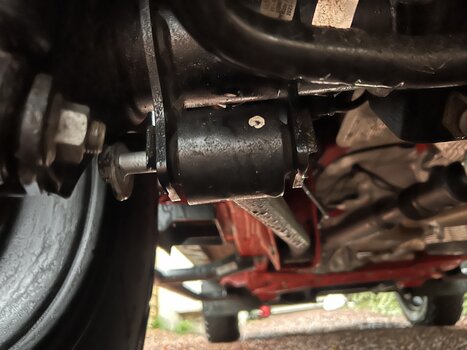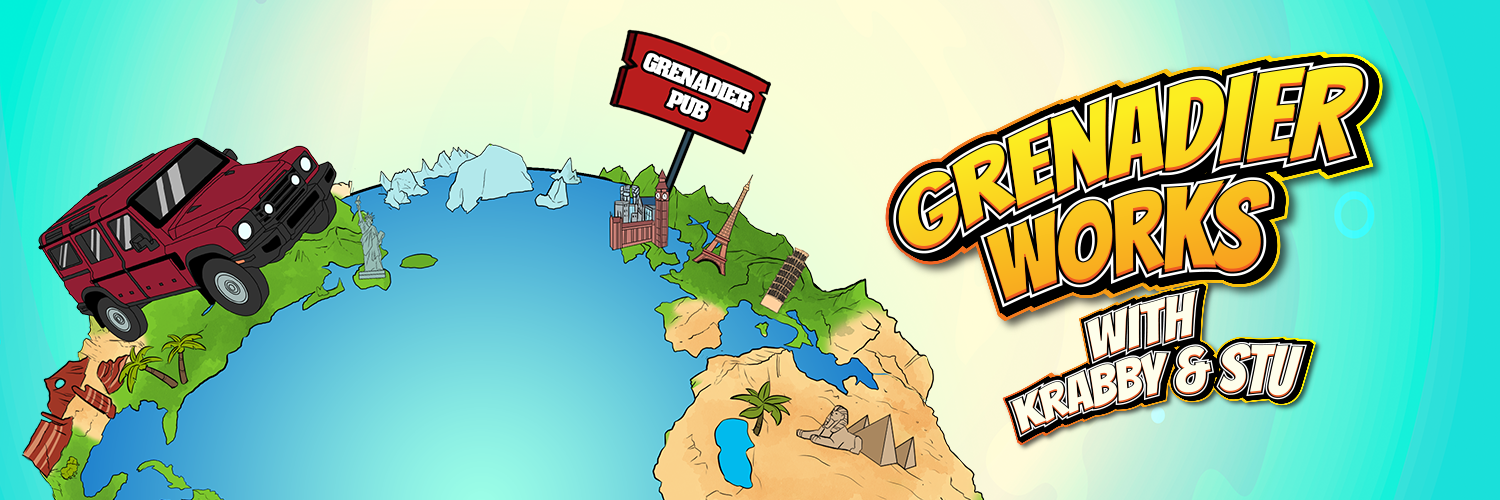It is quite likely that the problem is one of a flaw in the steel of the bolt, or an over-torqued bolt - as others have said.
@Miki - I'm not sure about this, but from what I recall - if the bushing is rubber, you install the bolts dry, but if the bushing is polyurethane, you install with grease. Someone correct this if it is not right. What material are the Grenadier bushings made from?
To the OP
@pete54
(1) Are you running larger tires or stock size?
(2) Are you running a suspension lift, or stock height?
(3) Have you been cycling the suspension off-road?
If the answer to one or more of these questions is "yes" than I wonder if part of the problem is that the rear lower control arm is not adjustable. The stock bushings do not allow for much lateral articulation. If you are doing a lot of technical off-roading / rock crawling. you might want to replace those arms with aftermarket ones - should those become available. Aftermarket arms for this purpose should (1) be adjustable in length, (2) have joints that provide for lateral articulation as well as the standard vertical or up/down articulation. See for example, the adjustable control arms made by Metalcloak for the Jeep JK. The JK came with short control arms - like the Grenadier - and so Metalcloak (and other companies) developed adjustable control arms that could be lengthened to accommodate a lifted suspension and larger tires - which is why I asked about tire size, suspension height, and type of driving.
Our top of the line mid-arm Game Changing Suspension System outperforms all others, featuring patented technology available nowhere else. Features Include: Duroflex™ Joints enhanced with Kevlar True Dual Rate™ Coils Durotrak™ equipped track bars Height adjustable bump stops Specifically tuned...

metalcloak.com
If the answer to all three questions (above) is "no", then it is most likely a defective bolt, or one that was over-torqued.
@anand - you mention that this was a "known issue" - was the bolt known to be from a batch of bolts that were bad, or just not spec'd to the appropriate strength?











